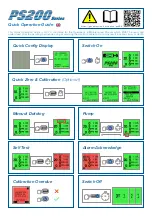
73
Discrimination is dependent on target signals being strong
enough for the GPX Series to determine if the target is ferrous
or non-ferrous. If the signal is weak the detector will give a
non-ferrous response until the signal becomes stronger, i.e.
due to a hole being dug and the coil getting closer to the
target. The Iron Reject function is designed this way to allow
maximum accuracy, while limiting the chances of rejecting a
desirable target.
In some areas, such as mining camps, old building sites
or a farmers’ field, you may choose less cautious levels
of discrimination. This may be because the soil is of low
mineralisation or the targets are large non-ferrous relics
that will not resemble ferrous targets. You may also use less
caution in a goldfield that has high levels of rubbish that
would not be otherwise detectable. Iron Reject allows you
to increase the amount of discrimination while knowingly
accepting more risk.
When Iron Reject is activated the detector rejects ferrous
objects by blanking the normal target signal. You will notice
the Threshold tone goes silent as the coil passes across the
ferrous target.
Tip:
To improve
discrimination accuracy
you should always test the
target from at least two
directions (90˚ from each
other) so that the detector
‘sees’ the target from
different profiles.
Caution: Do not attempt
to discriminate by
raising and lowering
the coil on a deep or
partially dug target. An
accurate discrimination
requires an even side-
to-side coil motion. It is
recommended to dig all
targets that do not give an
obvious rejection.
Target signals when detecting in All Metal.
Target signals using Iron Reject. Ferrous target blanked.
Ferrous Target
Audio Signal
Audio Signal
Blanking Signal
Non-Ferrous Target
Threshold
Threshold
Ferrous Target
Non-Ferrous Target
Summary of Contents for GPX 4800
Page 1: ...Instruction Manual...
















































